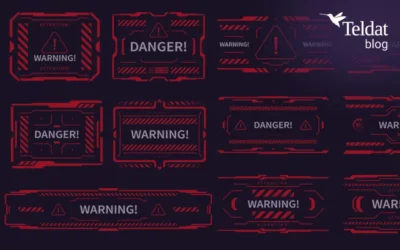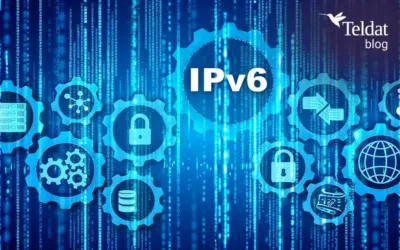 To support the further growth and development of the Internet of Things (IoT) the mobile industry is developing and standardising a new class of GSM technologies focused on IoT, which is called Low Power Wide Area (LPWA) networks. These technologies enable the new IoT services to expand and be more competitive and hence that is why it has the following advantages.
To support the further growth and development of the Internet of Things (IoT) the mobile industry is developing and standardising a new class of GSM technologies focused on IoT, which is called Low Power Wide Area (LPWA) networks. These technologies enable the new IoT services to expand and be more competitive and hence that is why it has the following advantages.
- Long battery life. Low power consumption enables devices to operate for years on a single charge. In excess of 10 years for some applications.
- Low device unit cost, so much so that the connectivity module is expected to eventually cost just a few dollars.
- Extended coverage. Improved outdoor and indoor penetration coverage compared with existing wide area technologies or even Wi-Fi technologies.
- Support for a massive number of devices, over a wide geographical area.
- Offer secure end-to-end connectivity and strong authentication. Totally in line with that required with the IoT applications.
- Optimised data transfer (supports small, intermittent blocks of data).
- Simplified network topology and deployment.
- Network scalability for capacity upgrade.
LPWA technologies are expected to serve a diverse range of vertical industries and support a range of applications and deployment scenarios which existing mobile technologies may not currently be best placed to connect them.
Due to the diversity of requirements, a single technology is not capable of addressing all the LPWA use cases. That´s why a new set of both proprietary LPWA solutions operating on unlicensed spectrums, such as Sigfox, Ingenu and LoRa, and 3GPP-standardised LPWA network solutions operating on an licensed spectrum has emerged to fill the gap. However, compared to proprietary solutions, standardised LPWA technologies defined by the 3GPP Standards Body cover the following. They meet a minimum level of performance, regardless of vendor. They ensure interoperability across vendors and mobile operators. Moreover, they are be able to be deployed over existing networks.
The 3GPP decided to standardise and license three LPWA technologies (in Release 13 -2016), to supply the needs and requirements of different sections of the IoT market. These three licenses are EC-GSM-IoT, LTE-M or LTECat.M1 and NB-IoT. Below are explanations of all these versions of LPWA.
Enhanced Coverage GSM for the Internet of Things (EC-GSM-IoT)
- EC-GSM-IoT is a 2G technology, based on existing eGPRS, designed as a high capacity, long range, low energy and low complexity cellular system to support the IoT. It can be deployed via a software upgrade to existing GSM networks.
- It provides a 3GPP LPWA standard for communicating at up to 70 Kbps, voice capability, full mobility and slow latency over re-framed 2G GSM cellular frequency bands and EC-GSM-IoT has been designed to offer coverage for M2M devices in locations with challenging radio coverage conditions.
- Applications for EC-GSM-IoT: Meters with strong coverage requirements and low power use (water, gas), smart grid and machinery control.
Long-Term Evolution Enhanced Machine Type Communications (eMTC, LTE-M or LTE Cat.M1)
- The 1st version of LTE-M was released with 3GPP Rel 8 based on Cat.1 but it does not meet the IoT requirements on battery, cost and range. A new version, Cat.0, was released with Rel 12.An enhanced version of Machine Type Communications, eMTC and definition has been completed in Rel 13 to meet the LPWA requirements. This is called LTE MTC Cat.M1.
- LTE-M is an evolution of LTE technology optimized for IoT.It employs new mechanisms to reduce device complexity (Low RF bandwidth support, down to 180KHz), improved power consumption (PSM, Power Saving Mode), and expanded coverage and penetration over existing LTE networks (Extended discontinuous receive eDRX, Power Boosting, longer acquisition time and higher error rate).
- LTE MTC Cat.M1 enables all they must have capabilities for successful IoT deployments, including IP connectivity, over-the-air (OTA) device management, voice capability, data rates up to 375 Kbps, full mobility and low latency.
- Applications for LTE MTC Cat.M1: Trackers, health monitors, security systems, wearables, vending machines and industrial handhelds.
Narrow-Band Internet of Things (NB-IoT or Cat.NB1)
- NB-IoT has been designed to offer extended coverage compared to the traditional GSM networks. NB-IoT can improve UL capacity for users in bad coverage areas through single tone transmissions. New physical layer signals and channels, such as synchronisation signals and physical random-access channel, are designed to meet the demanding requirements of extended coverage.
- Defined under the 3GPP LTE standard, NB-IoT can be deployed on existing LTE networks with a software upgrade, allowing a narrower adaptation of the 4G LTE technology to fit into 2G channels. This technology can be deployed in-band, utilizing resource blocks within a normal LTE carrier, or in the unused resource blocks within a LTE carrier´s guard-band, or “standalone” for deployments in dedicated spectrum.
- NB-IoT features lower data rates than Cat.M1 (65 Kbps versus 357 Kbps), improved indoor coverage, massive connections and low power consumption. With its design for extremely low-bandwidth communication, Cat.NB1 can provide a cost-effective option for applications with low mobility, low data rates, medium latency and no voice requirements.
- Applications for NB-IoT or Cat.NB1: Industrial sensors, utility meters, agriculture monitors, city infrastructures, remote controllers and parking meters.


























